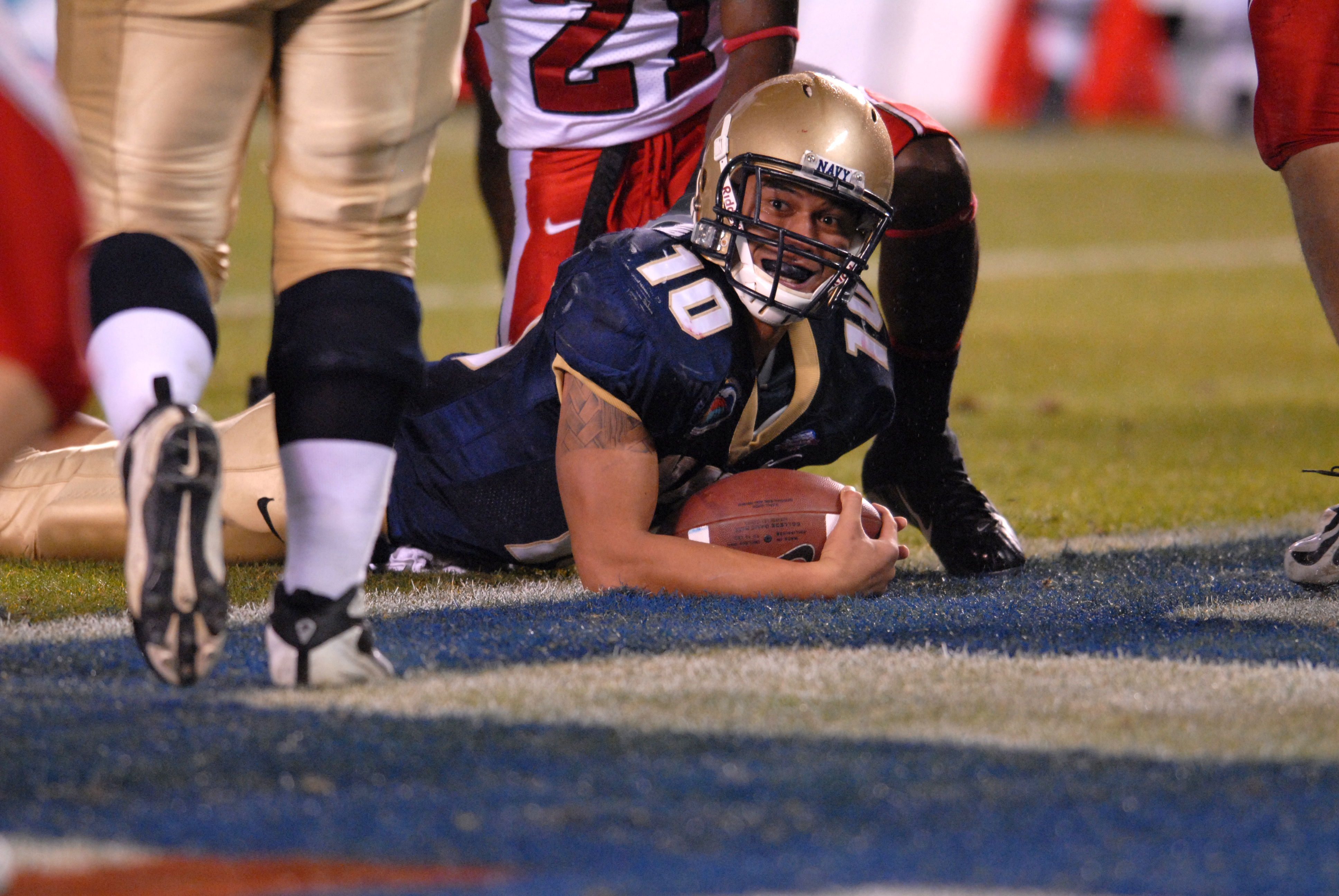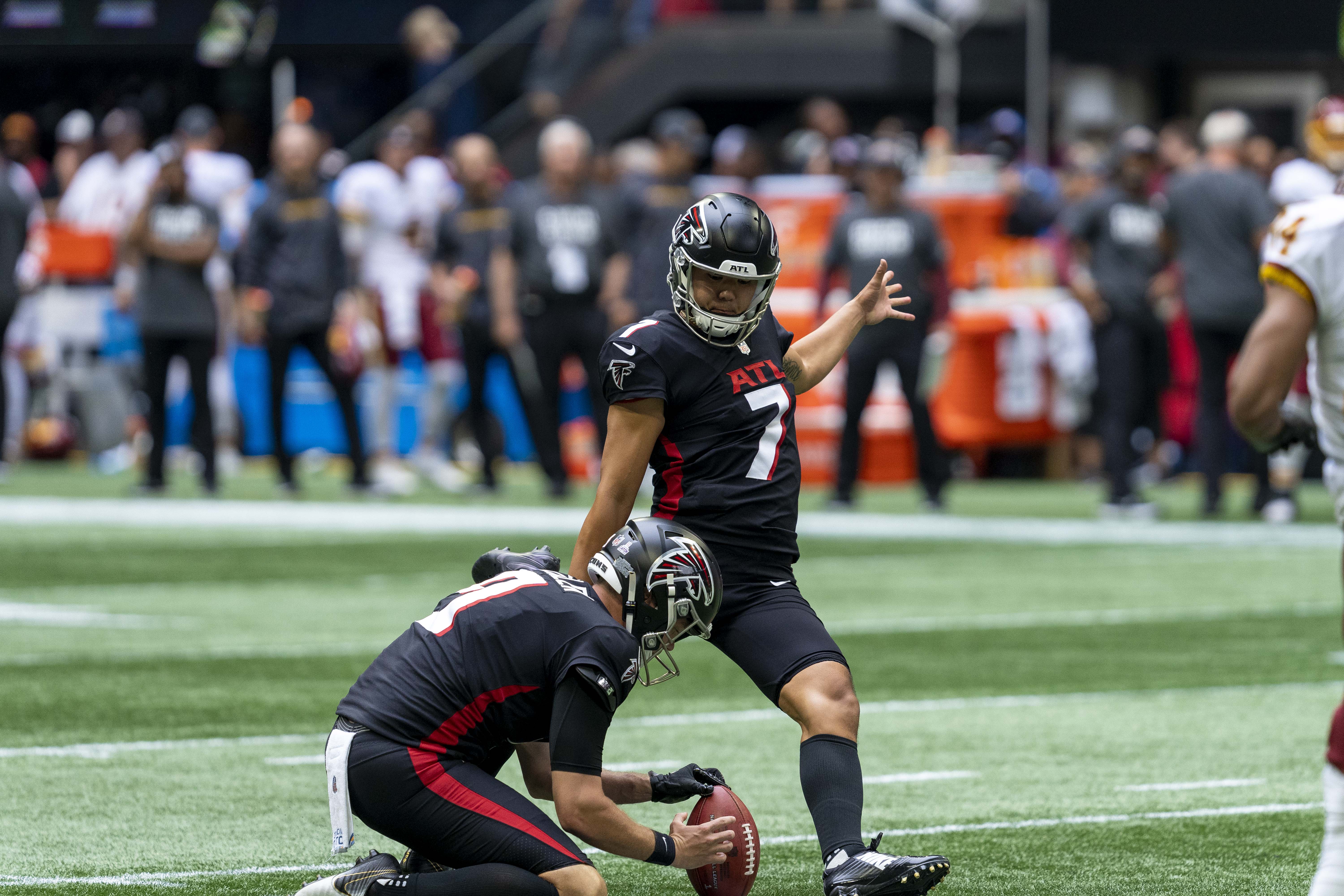|
1986 Peach Bowl
The 1986 Peach Bowl was a post-season American college football bowl game at Fulton County Stadium in Atlanta, Georgia between the Virginia Tech Hokies and the North Carolina State Wolfpack from on December 31, 1986. The game was the final contest of the 1986 NCAA Division I-A football season for both teams, and ended in a 25–24 victory for Virginia Tech, the first bowl victory in school history. Virginia Tech came into the game with an 8–2–1 record that included a lopsided loss to the Temple Owls, who would forfeit the season two years later after using an ineligible player. Facing the Hokies in the Peach Bowl were the 18th-ranked Wolfpack from North Carolina State University. N.C. State was led by head coach Dick Sheridan and had a regular-season record of 8–2–1 that included five wins over Atlantic Coast Conference teams. The 1986 Peach Bowl kicked off five years minus one day since Virginia Tech had last played in Atlanta—during the 1981 ... [...More Info...] [...Related Items...] OR: [Wikipedia] [Google] [Baidu] |
Atlantic Coast Conference
The Atlantic Coast Conference (ACC) is a collegiate athletic conference located in the eastern United States. Headquartered in Greensboro, North Carolina, the ACC's fifteen member universities compete in the National Collegiate Athletic Association (NCAA)'s Division I. ACC football teams compete in the NCAA Division I Football Bowl Subdivision. The ACC sponsors competition in twenty-five sports with many of its member institutions held in high regard nationally. Current members of the conference are Boston College, Clemson University, Duke University, Georgia Institute of Technology, Florida State University, North Carolina State University, Syracuse University, the University of Louisville, the University of Miami, the University of North Carolina, the University of Notre Dame, the University of Pittsburgh, the University of Virginia, Virginia Polytechnic Institute and State University, and Wake Forest University. ACC teams and athletes have claimed dozens of national ... [...More Info...] [...Related Items...] OR: [Wikipedia] [Google] [Baidu] |
1986 NCAA Division I-A Football Season
The 1986 NCAA Division I-A football season ended with Penn State winning the national championship. Coached by Joe Paterno, they defeated Miami (Fl) 14–10 in the Fiesta Bowl. This Fiesta Bowl was the first in the game's history to decide the national championship, launching it into the top tier of bowls. Miami came into the game No. 1 and Penn State No. 2. In a move that would come to symbolize the game for years to come, Miami arrived wearing combat fatigues while Penn State arrived wearing suits and ties. Despite all the hype surrounding Miami, Penn State's defense harassed and harried Heisman trophy winner Vinny Testaverde throughout the Fiesta Bowl. The Hurricanes committed seven turnovers, including five interceptions thrown by Testaverde – the last of which, in the end zone with 18 seconds left, won the game for the Nittany Lions. Conference and program changes *The Missouri Valley Conference ended the hybrid nature of the conference which featured Division I-AA progr ... [...More Info...] [...Related Items...] OR: [Wikipedia] [Google] [Baidu] |
Peach Bowl
The Peach Bowl is an annual college football bowl game played in Atlanta, Georgia since December 1968. Since 1997, it has been sponsored by Chick-fil-A and is officially known as the Chick-fil-A Peach Bowl. From 2006 to 2013, it was officially referred to as simply the Chick-fil-A Bowl. The winner of the bowl game is awarded the ''George P. Crumbley Trophy'', named after the game's founder George Crumbley. The first three Peach Bowls were played at Grant Field on the Georgia Tech campus in Atlanta. Between 1971 and 1992, Atlanta–Fulton County Stadium hosted the game. Between 1993 and 2016, the Georgia Dome played host. The bowl then moved to Mercedes-Benz Stadium starting in 2017. Since the 2014 season, the Peach Bowl has been part of the New Year's Six, featuring College Football Playoff matchups with the 2016, 2019, 2022, and 2025 games hosting a national semifinal. History Seven of the first ten meetings (all but the 1968, 1971, and 1974 games) pitted an Atlantic Coast Conf ... [...More Info...] [...Related Items...] OR: [Wikipedia] [Google] [Baidu] |
Running Out The Clock
In sports, running out the clock (also known as running down the clock, stonewalling, killing the clock, chewing the clock, stalling, time-wasting (or timewasting) or eating clock) is the practice of a winning team allowing the clock to expire through a series of preselected plays, either to preserve a lead or hasten the end of a one-sided contest. Such measures expend time but do not otherwise have a tactical purpose. This is usually done by a team that is winning by a slim margin (or, occasionally, tied) near the end of a game, in order to reduce the time available for the opposing team to score. Generally, it is the opposite strategy of running up the score. The process of running out the clock generally involves low-risk, low-event play, intending to minimize the ability of the other team to interfere or counter. As this produces unexciting sport for spectators, many rulebooks attempt to counteract this; some include a time limit for completing a play, such as a play clock or ... [...More Info...] [...Related Items...] OR: [Wikipedia] [Google] [Baidu] |
Two-point Conversion
In gridiron football, a two-point conversion or two-point convert is a play a team attempts instead of kicking a one-point conversion immediately after it scores a touchdown. In a two-point conversion attempt, the team that just scored must run a play from scrimmage close to the opponent's goal line (5-yard line in amateur Canadian, 3-yard line in professional Canadian, 3-yard line in amateur American, 2-yard line in professional American; in professional American football, there is a small dash to denote the line of scrimmage for a two-point conversion; it was also the previous line of scrimmage for a point-after kick until 2014) and advance the ball across the goal line in the same manner as if they were scoring a touchdown. If the team succeeds, it earns two additional points on top of the six points for the touchdown, for a total of eight points. If the team fails, no additional points are scored. In either case, if any time remains in the half, the team proceeds to a kickoff ... [...More Info...] [...Related Items...] OR: [Wikipedia] [Google] [Baidu] |
Fumble
A fumble in gridiron football occurs when a player who has possession and control of the ball loses it before being downed (tackled), scoring, or going out of bounds. By rule, it is any act other than passing, kicking, punting, or successful handing that results in loss of ball possession by a player. A fumble may be forced by a defensive player who either grabs or punches the ball or butts the ball with their helmet (a move called "tackling the ball"). A fumbled ball may be recovered and advanced by either team (except, in American football, after the two-minute warning in either half or 4th down, when the fumbler is the only offensive player allowed to advance the ball, otherwise the ball is ruled dead at the spot of fumble, except when it is recovered for a loss. A fumble is one of three events that can cause a turnover (the other two being an interception or a turnover on downs). Under American rules a fumble may be confused with a muff. A muff occurs where a player dr ... [...More Info...] [...Related Items...] OR: [Wikipedia] [Google] [Baidu] |
Halftime
In several team sports, matches are played in two halves. Half-time (also written halftime or half time) is the name given to the interval between the two halves of the match. Typically, after half-time, teams swap ends of the field of play in order to reduce any advantage that may be gained from wind or a slope to the playing surface, for example. While it exists mainly to allow competitors to rest briefly and recover from the play of the first half, half-time also serves a number of other purposes. It also serves as an intermission for spectators, and it often features entertainment, such as cheerleading performances, tifos, performances by school marching bands (particularly in high school and collegiate sports in North America), or concerts featuring popular music acts (particularly in major events such as the Super Bowl). On games that are broadcast on television and radio, it also provides broadcasters with an opportunity to give a recap of the first half of the game, air h ... [...More Info...] [...Related Items...] OR: [Wikipedia] [Google] [Baidu] |
Field Goal (football)
A field goal (FG) is a means of scoring in gridiron football. To score a field goal, the team in possession of the ball must place kick, or drop kick, the ball through the goal, i.e., between the uprights and over the crossbar. The entire ball must pass through the vertical plane of the goal, which is the area above the crossbar and between the uprights or, if above the uprights, between their outside edges. American football requires that a field goal must only come during a play from scrimmage (except in the case of a fair catch kick) while Canadian football retains open field kicks and thus field goals may be scored at any time from anywhere on the field and by any player. The vast majority of field goals, in both codes, are place kicked. Drop kicked field goals were common in the early days of gridiron football but are almost never done in modern times. In most leagues, a successful field goal awards three points (a notable exception is six-man football in which, due to t ... [...More Info...] [...Related Items...] OR: [Wikipedia] [Google] [Baidu] |
Touchdown
A touchdown (abbreviated as TD) is a scoring play in gridiron football. Whether running, passing, returning a kickoff or punt, or recovering a turnover, a team scores a touchdown by advancing the ball into the opponent's end zone. In American football, a touchdown is worth six points and is followed by an extra point or two-point conversion attempt. Description To score a touchdown, one team must take the football into the opposite end zone. In all gridiron codes, the touchdown is scored the instant the ball touches or "breaks" the plane of the front of the goal line (that is, if any part of the ball is in the space on, above, or across the goal line) while in the possession of a player whose team is trying to score in that end zone. This particular requirement of the touchdown differs from other sports in which points are scored by moving a ball or equivalent object into a goal where the whole of the relevant object must cross the whole of the goal line for a score to be a ... [...More Info...] [...Related Items...] OR: [Wikipedia] [Google] [Baidu] |
End Zone
The end zone is the scoring area on the field, according to gridiron-based codes of football. It is the area between the end line and goal line bounded by the sidelines. There are two end zones, each being on an opposite side of the field. It is bordered on all sides by a white line indicating its beginning and end points, with orange, square pylons placed at each of the four corners as a visual aid (however, prior to around the early 1970s, flags were used instead to denote the end zone). Canadian rule books use the terms ''goal area'' and ''dead line'' instead of ''end zone'' and ''end line'' respectively, but the latter terms are the more common in colloquial Canadian English. Unlike sports like association football and ice hockey which require the ball/puck to pass completely over the goal line to count as a score, both Canadian and American football merely need any part of the ball to break the vertical plane of the outer edge of the goal line. A similar concept exists ... [...More Info...] [...Related Items...] OR: [Wikipedia] [Google] [Baidu] |
Punt (gridiron Football)
In gridiron football, a punt is a kick performed by dropping the ball from the hands and then kicking the ball before it hits the ground. The most common use of this tactic is to punt the ball downfield to the opposing team, usually on the final down, with the hope of giving the receiving team a field position that is more advantageous to the kicking team when possession changes. The result of a typical punt, barring any penalties or extraordinary circumstances, is a first down for the receiving team. A punt is not to be confused with a drop kick, a kick ''after'' the ball hits the ground, now rare in both American and Canadian football. The type of punt leads to different motion of the football. Alex Moffat invented the now-common spiral punt, as opposed to end-over-end. Description A punt in gridiron football is a kick performed by dropping the ball from the hands and then kicking the ball before it hits the ground. In football, the offense has a limited number of downs, or ... [...More Info...] [...Related Items...] OR: [Wikipedia] [Google] [Baidu] |
1981 Peach Bowl (January)
The 1980 (season) Peach Bowl was a post-season American college football bowl game between the Hurricanes from the University of Miami and the Gobblers from the Virginia Polytechnic Institute and State University at Fulton County Stadium in Atlanta, Georgia on January 2, 1981. The game was the final contest of the 1980 NCAA Division I-A football season for both teams, and ended in a 20–10 victory for Miami. Another game by the same name followed the 1981 NCAA Division I-A football season and was played in December, 1981. Miami finished the regular season with an 8–3 record, including wins over Florida State and Florida. Facing Miami was a familiar post-season opponent-Virginia Tech, whom the Hurricanes had played in the 1966 Liberty Bowl, Tech's last bowl appearance prior to the Peach Bowl. Tech was awarded a bid to the Peach Bowl as a reward for finishing 8–3 during the regular season, a record that included wins over nationally ranked teams such as the Clemson Ti ... [...More Info...] [...Related Items...] OR: [Wikipedia] [Google] [Baidu] |






